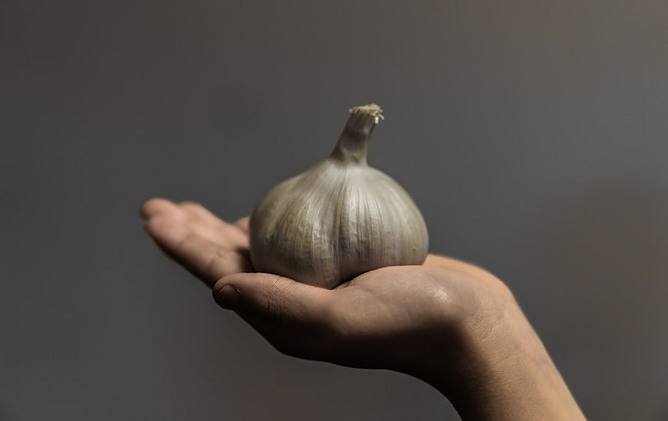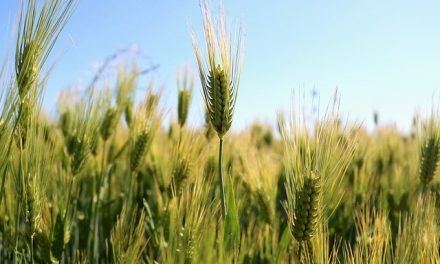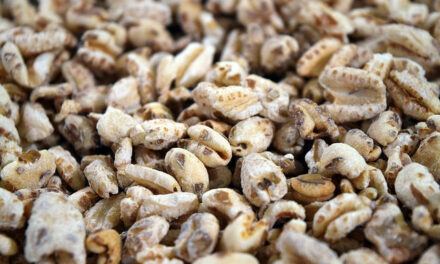In this article, we will be looking at all the differences and similarities between Elephant Garlic vs Regular Garlic to list the Elephant Garlic Health Benefits.
Let’s start rolling…
Are you a sucker for garlic but find its flavour and taste too strong to chew raw, then it may be time for you to try out a new ‘superfood’ – Elephant garlic.
If you only just recently noticed these huge ‘garlic’ bulbs when you’re out grocery shopping, walking around your garden or surfing the net, and wondered what they really are – You’ve come to the right place.
When it comes to size, elephant garlic cloves weigh up to 1 pound per bulb, and could be as large as an adult’s palm, if not larger.
As large as it appears, it possesses a very mild flavour and a bunch of nutritional benefits – Truly a gentle giant!
Recently there have been talks of the promising potential of elephant garlic in the reduction of high blood pressure and cholesterol. There are also some healing tendencies.
Numerous studies have been conducted to show its benefits and properties, even more so with its increasing demand and use.
People with diabetes or high blood pressure and their families might be particularly interested to know if it may have some health benefits to their medical condition.
We will expand more on the uses and benefits of elephant garlic, as well as its unique properties in contrast with regular garlic here. In the end, we will discuss how people with diabetes and blood pressure treat this garlic…
Let’s start by defining elephant garlic.
What is Elephant Garlic?
Elephant garlic, also called Oriental or Great Headed garlic, is a perennial plant belonging to the Allium
(onion) genus.
Superficially, it looks like a clove of ginormous-sized garlic with fewer cloves, about three to four of those. The flavour of the bulb and cloves, however, is mellow, bordering between onion and leek with a hint of true garlic.
Botanically, elephant garlic is classified as Allium ampeloprasum, meaning it belongs to the leek family.
It is a vegetable claimed to be native to China but was immigrated through Russians to the US. But in recent times, it can be found in different parts of the world.
Almost every part of the elephant garlic plant can be of use, from the long, sleek, solid green flowering stalk, to the flower, the leaves, and down to the elephant garlic bulb.
The scapes or spear (flower stalks)
Elephant garlic scapes can be used in more ways than one.
These scapes grow straight up, slightly different from other garlic scapes that start curling into a circle as they mature. And so, harvesting them when they are young and short conserves more energy for the elephant garlic bulb to grow bigger.
These scapes, like asparagus or green beans, are quite delicious and easy to prepare.
They can be pickled, fermented, chopped up and sautéed, roasted, cooked, eaten raw or even frozen and preserved for up to a year. You can enjoy them in fried rice, stir-fries, omelettes or soups.
The flower
Elephant garlic scape (flower stalk) grows into an elegant flower as tall as 5 feet.
The 5-inch flower head atop the stalk is big, purple and beautiful and much-loved by bees. It slowly transitions into a fascinating dry seed head that lasts for a long time.
Elephant garlic flower heads can serve as an inexpensive yet appealing addition to your flower garden, both as a fresh purple flower or as a dry seed head.
Interestingly, it can also be consumed raw, in salads.
Tip: Don’t mix up with Purple Garlic. That’s a clove of different garlic.
The leaves
Elephant garlic leaves can be used to make fresh salads.
You could also chop them up for simple meals where their flavour won’t disappear, such as noodles or scrambled eggs.
If you have a garden or elephant garlic growing as weeds around your vicinity, they are best plucked when their bulb starts to sprout in the late fall or early winter period.
They can be picked right up to mid-spring; however, the flavour starts to get stronger and hotter as the leaves mature. At this stage, they can still be used to make something else, fermented elephant garlic leaves.
The bulbs
The elephant garlic bulb can be used in the same way you would use a regular garlic bulb. It can be eaten raw, minced, sliced, sautéed, or roasted.
While many would prefer to eat it raw in salads, just for the love of it, it’s actually just as enjoyable when cooked.
Why Does My Elephant Garlic Taste Bitter?
While many find nothing wrong when they consume their elephant garlic, there are some people who may find that it has a bitter taste. This is no surprise, and here’s why.
Overcooked elephant garlic, or any other garlic for that matter, will turn bitter.
Here are some tips to prevent elephant garlic from turning bitter:
- Garlic burns quite easily, so be careful not to cook it for too long or use too much heat.
- If there’s a need to cook it with other ingredients, like onions, for instance, then you can start with the onions, then add the elephant garlic towards the end of the cooking.
- When sautéing elephant garlic with butter, be cautious because butter burns faster than oil.
And with that, let’s move on to how elephant garlic is different from common garlic.
Elephant Garlic vs Regular Garlic – What is the Difference?
Regular garlic and elephant garlic are both aromatics belonging to the allium genus.
Your first impression about elephant garlic will probably be, “what a huge garlic!” That’s not surprising, given its appearance.
The two ‘garlics’ don’t just look similar, but the taste and smells are almost the same. But, on a closer look, the elephant garlic is quite different from the regular garlic you know, and in more ways than one.
Listed below are the various differences between the elephant garlic and the regular garlic:
|
Regular garlic |
Elephant garlic | |
|
Specie |
Allium sativum |
Allium ampeloprasum |
|
Bulb size |
small sized |
2-3 times larger |
|
No of cloves per head/bulbs |
As many as 20 cloves |
Not more than 6 cloves at most |
|
Colour of cloves |
Pale off-white |
Yellowish cast |
|
Taste |
Pungent |
Mild (garlicky onion) |
|
Flower |
White, pink, or lime-green colour with miniature bulbils |
Purple colour with no bulbils |
Elephant Garlic vs Elephant Garlic Leeks
Leeks have over 400 different types of specie, which is grouped into three – Kurrat, Porrum and Ampeloprasum.
Of the three groups, elephant garlic belongs to the ampeloprasum. However, some leeks are cultivated while others are left to grow in the wild.
Broadleaf wild leek is a general name for leeks that grow in the wild.
Elephant garlic
Elephant garlic is generally cultivated and harvested in the same way regular garlic is grown. This way, larger bulbs can be harvested without caring so much for other parts of the plant. Like regular garlic, it can be stored for long periods of time if kept cool and dry.
Elephant garlic leek
Elephant garlic leek is elephant garlic used as spring leeks. In contrast, they have a shorter shelf life, much like scallions sold in the fresh market.
Elephant garlic can be cultivated, or left to grow in the wild. When they are left to grow clustered together, there’s not much room for the bulbs to develop.
So when the elephant garlic leeks are harvested, they are very tender and easy to cut. They look like a leek and can be used like one, from the top to the base.
What’s in Elephant Garlic? – The Nutritional Content
The elephant garlic is full of healthy nutrients, including allicin, calcium, fibre and vitamins. Here are some nutritional contents of elephant garlic (chopped or raw).
9 grams of elephant garlic contains:
|
Nutrients |
Amount |
Value |
|
Calories |
13.4 | |
|
Carbohydrate |
3 |
g |
|
Protein |
:0.6 |
g |
|
Total fat |
0.04 |
g |
|
Fibre |
0.2 |
g |
Elephant Garlic Health Benefits
Let’s look at two major medicinal purposes of this nutritious vegetable. You will find they are closely related to that of regular garlic but not quite as potent.
- Anti-microbial
According to research studies, elephant garlic exhibits some anti-microbial activities.
Allicin, an antimicrobial agent, found in regular garlic, contains thiosulfate and diallyl sulphide. These two are considered to be highly effective against major pathogens responsible for food poisoning.
A study used elephant garlic oil against a major foodborne pathogen – Vibrio cholera. It can be found in raw or lightly cooked food in Thailand. The oil, according to the study, was able to inhibit or kill the bacteria, stunting the bacteria’s growth.
Elephant garlic, among other Allium species, contains about 8 different thiosulphinates. Apparently, these thiosulphinates are known to be antimicrobial agents. Elephant garlic has 8 different types of those! It may well have the same antibiotic potency as regular garlic, if not stronger.
- Anti-cancer
Elephant garlic, like regular garlic, may be able to slow down or inhibit the growth of cancer cells. This may eventually lead to apoptosis, cell cycle arrest and angiogenesis inhabitation.
In a lab study, the effect of elephant garlic against osteosarcoma cell (U2OS) cell activity and proliferation was tested. By using elephant garlic extract and human osteosarcoma cells, the study concluded that elephant garlic did exhibit not only antimicrobial effects but also inhibited osteosarcoma cells (U2OS) cell activity and proliferation.
Other health benefits of elephant garlic include:
- Better cholesterol control
- Improved blood pressure control
- Combating influenza and the common cold
- Combating cancer
- Improved blood sugar control
- Protection of arteries
- Improved immunity and digestion
Tip: We covered Garlic Supplements earlier.
Does Elephant Garlic Lower Blood Pressure?
Garlic is actually a natural remedy for high blood pressure used since ancient times, thanks to Allicin.
A number of studies have proven that allicin supports and improves blood vessel health. It may improve control of blood pressure as well as cholesterol levels.
The only concern is that the amount of allicin in elephant garlic may not be enough to provide these benefits as it should. In-depth research and studies on this aspect seem to be lacking.
Tip: Learn about Garlic Pills for blood pressure here.
Does Elephant Garlic Lower Blood Sugar in Diabetics?
There’s a whole archive of studies out there on the effects of garlic on blood sugar. And, the majority of them agree that garlic may be able to reduce blood sugar levels in people living with type 2 diabetes. The active agent responsible is Allicin.
Allicin is also found in elephant garlic, though not as much as the amount in regular garlic. Notwithstanding, it is able to deliver some of it benefits, including lowering and control of blood sugar levels in diabetics.
Tip: Don’t mix up with Garlic Salt.
Does Elephant Garlic Help With Wound Healing?
According to a study on the antibacterial effects of elephant garlic, it was deduced that the antibacterial ability of elephant garlic was on par with that of regular garlic, even stronger in some cases. The study went further to show that its antibacterial capacity when applied to E. coli, B. was stronger than ampicillin.
The antimicrobial effects of elephant garlic may reduce the rate of infection and subsequently improve the rate of wound healing. However, there is very little research to back up such a claim.
Elephant Garlic – Cautions and Possible Side Effects
Presently there is no recognized side effects from using elephant garlic. However, elephant garlic may contain blood-thinning properties and should be consumed with caution.
Though rare, some people can be allergic to elephant garlic.
Generally, every Allium specie, including elephant garlic, is poisonous to animals. So, make sure there you don’t feed your pets food containing elephant garlic.
Conclusion
Elephant garlic is simply different from regular garlic, if we are to ask which one is the stronger. Though they may look similar and taste almost similar, they are not of the same species.
Moreover, elephant garlic has a less intense flavour compared with regular garlic. So, while it may be appealing to those who find raw regular garlic too strong, elephant garlic cannot act as a replacement for regular garlic.
In case you want less potency of garlicky flavour, then go for regular garlic, but less.
Notwithstanding, elephant garlic stands as a superfood on its own. It delivers its own unique taste, recipe and health benefits.
Not to mention, the many uses the whole plant can provide individually. From the flower, to the flower stalk, the leaves, and down to the bulbs. Nothing goes to waste!
Finally, we can see that elephant garlic is full of nutrients beneficial for the body’s growth and healing. It may also help in the reduction and control of high blood pressure, and high cholesterol, which are major risk factors for diabetics.
Further studies also indicate that it may have the potential to combat cancer and bacteria.
There is nothing to lose, but much to gain from introducing elephant garlic to your kitchen cabinet. If you are already a fan, then that’s great news.
Knowing more about ‘garlics’ – whether they are true garlics or not – will be of help to you as an informed user, shopper, grower and lover of the delicious allium.














